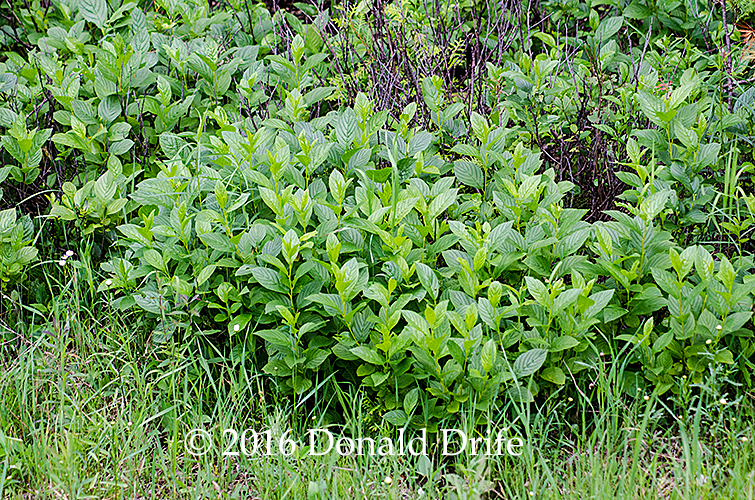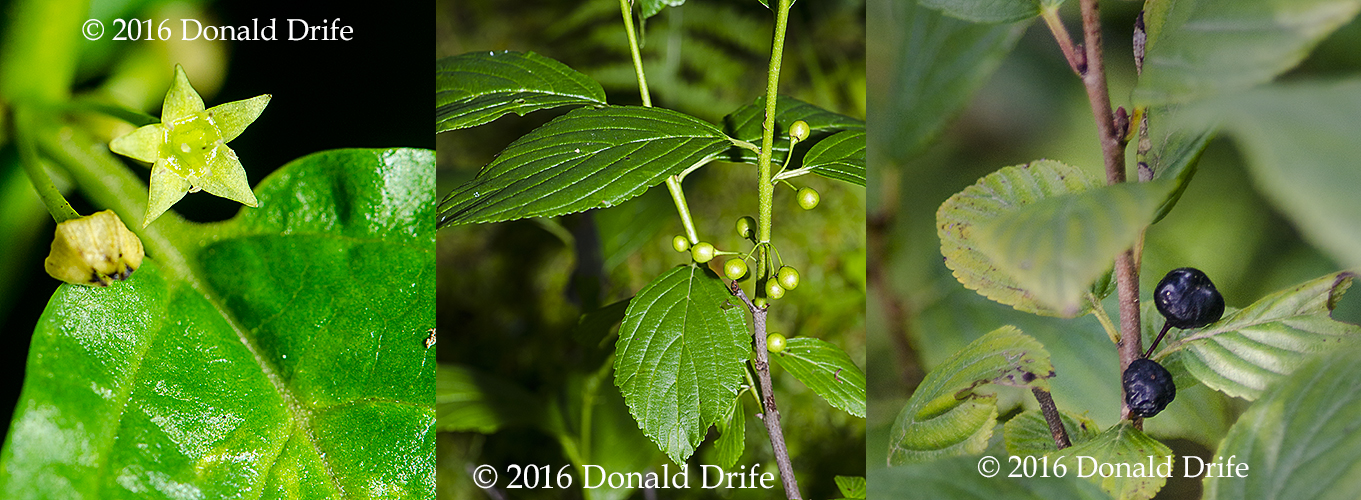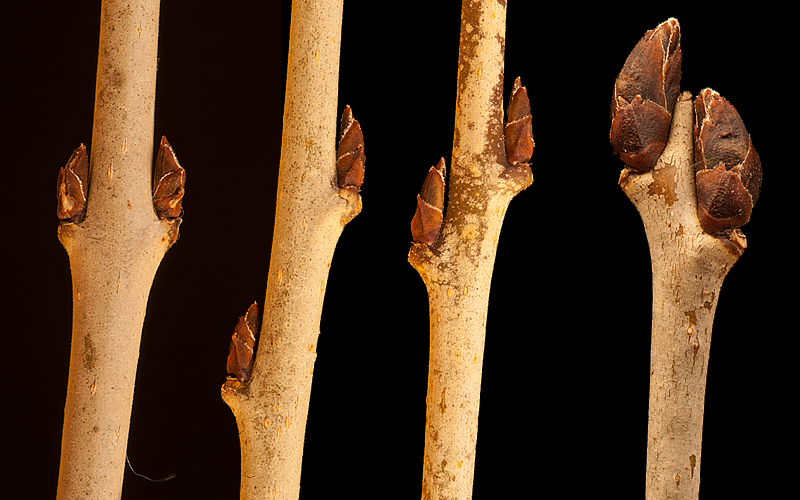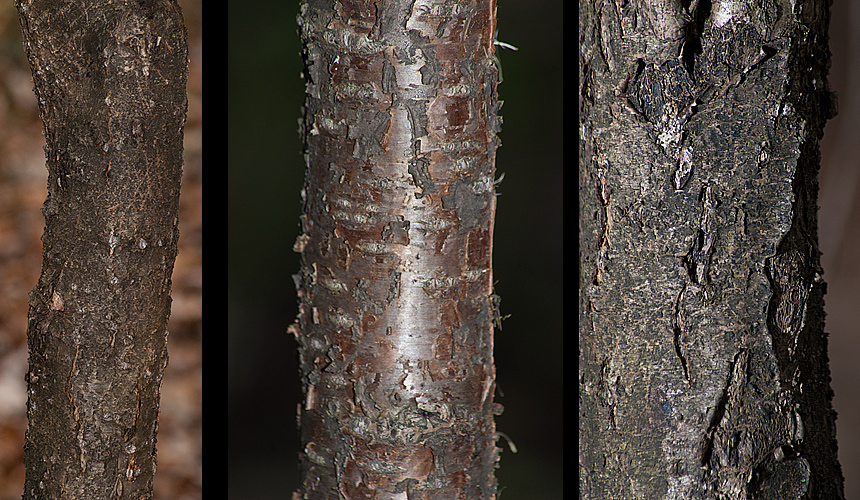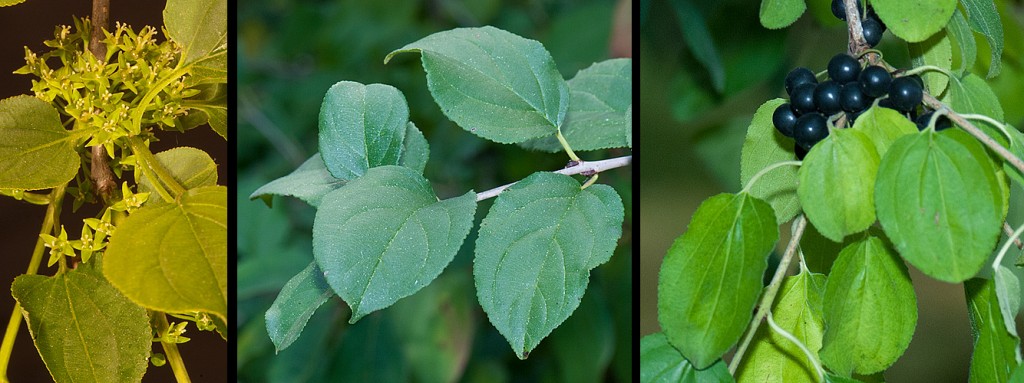Michigan has a native Buckthorn, Alder-leaved Buckthorn (Rhamnus alnifolia). It normally grows in fens and is seldom found in dry habitats. It is similar to the invasive Common Buckthorn (R. cathartica) but the two species are easy to tell apart.
Alder-leaved Buckthorn is normally shorter than 1m [3 feet] tall. Its toothed leaves are strictly alternate with 5 to 9 veins per side and are more pointed at the tips than Common Buckthorn. The leaves have stipules at the base of the petioles; however, they are sometimes missing late in the growing season. The flowers lack petals. The petal-like structures are sepals. Sepals are the covering of flower buds; petals are found inside the bud. There are 5 sepals and 5 stamens on each flower. The flowers, and hence the fruits, are in small groups, less than 3 in a cluster.
Common Buckthorn can reach the size of a small tree. Its toothed leaves can vary from alternate, to sub-opposite, to opposite, on the same branch. Its flowers are 4-parted with both sepals and petals. Flower and fruit clusters are large, seldom as few as 3in a cluster. The branch tips are normally spine tipped and spines can often be found on the along the main trunk.
Glossy Buckthorn (Frangula alnus) is a wetland invasive species but has non-toothed leaves. Its veins are 6 to 9 per side. It has 5 sepals and 5 petals on each flower. The leaf buds are tan pubescent (covered with dense short hairs).
If you are removing invasive buckthorn you should know this native species. One site in Oakland County was almost destroyed by over-zealous invasive species hunters who did not realize that the invasive Common Buckthorn did not grow into the fen at the bottom of the hill.
Copyright 2016 by Donald Drife
Webpage Michigan Nature Guy
Follow MichiganNatureGuy on Facebook

